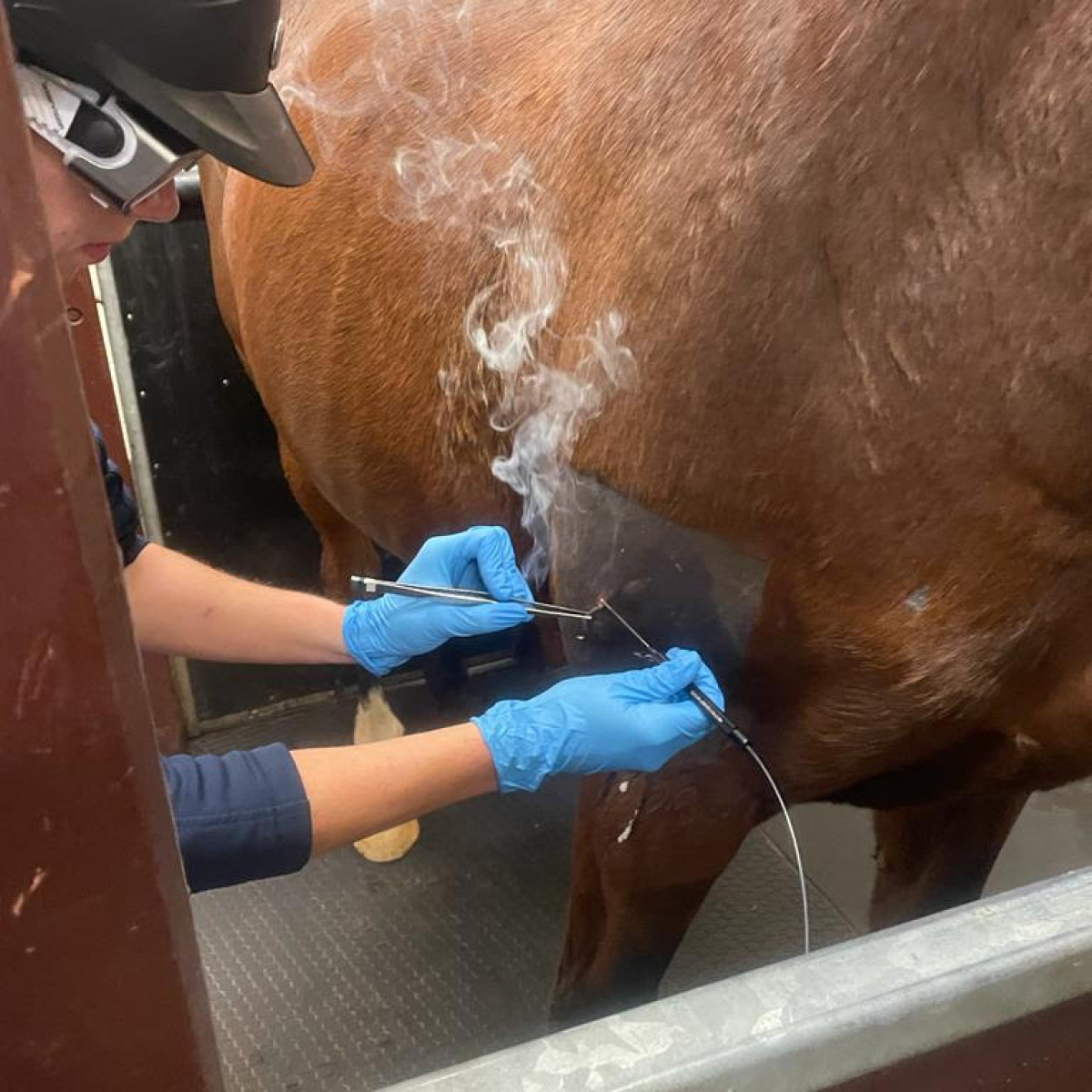The Power of Equine Therapy for Anxiousness, PTSD, and Psychological Healing
The Power of Equine Therapy for Anxiousness, PTSD, and Psychological Healing
Blog Article
Examining the Performance of Laser Treatment in Equine Treatment for Injury Rehab
The examination of laser treatment's effectiveness in equine injury rehab hinges on multiple variables, including recovery time, discomfort reduction, and cells regeneration. Vets regularly observe superior results with laser therapy compared to conventional techniques, placing it as a crucial component in equine care.
Comprehending Laser Treatment
Laser therapy has actually come to be a pivotal tool in vet medication, specifically in the treatment of equine problems. Understood for its non-invasive nature and efficacy, laser treatment includes the application of particular wavelengths of light to boost cells fixing and lower swelling. This therapeutic modality is significantly favored for its capability to increase the healing process in horses dealing with a range of musculoskeletal injuries and persistent problems.
The key device behind laser treatment is its ability to enhance mobile features. Furthermore, laser therapy promotes vasodilation, boosting blood circulation and oxygen distribution to broken tissues, hence speeding up recovery.
In equine medicine, laser therapy is particularly helpful for conditions such as tendonitis, osteo arthritis, and wound recovery. The technique is lauded for its pain-relieving residential or commercial properties, permitting equines to reclaim flexibility and function more rapidly. Veterinarians likewise value its marginal side effects compared to various other treatment methods, making it a reliable and secure alternative for equine treatment.

Exactly How Laser Therapy Works

Upon absorption, these photons set off a collection of biochemical adjustments, improving mitochondrial function and bring about boosted adenosine triphosphate (ATP) production. This increase in ATP accelerates mobile metabolic process, promoting cells fixing and regrowth. Additionally, laser therapy regulates inflammatory reactions by impacting cytokine degrees and minimizing oxidative stress, consequently alleviating discomfort and swelling.
Another significant facet of laser treatment is its role in improving microcirculation. The treatment promotes vasodilation, improving blood flow and oxygen shipment to damaged cells (Equine Therapy). This assists in the elimination of cellular particles and sustains the spreading of fibroblasts and collagen synthesis, crucial for injury recovery
Medical Proof
The efficacy of laser treatment in equine treatment has been substantiated with different professional research studies, showcasing its restorative potential throughout a variety of problems. A research carried out by Turner et al. (2012) showed that steeds treated with low-level laser therapy (LLLT) for ligament injuries exhibited sped up healing contrasted to those obtaining standard therapies.
Likewise, research by Johnson and colleagues (2015) concentrated on equine muscle injuries, revealing that laser therapy significantly expedited muscular tissue fiber regeneration and lowered muscle tightness. Clinical assessments have actually revealed that laser therapy can minimize persistent problems such as osteo arthritis.
Vet Insights

Vets also value the versatility of laser treatment. It can be used for a vast array of conditions, from surface wounds to much deeper bone and joint injuries. Dr. Emily Brown highlights its utility in treating problems like tendonitis and osteo arthritis, where standard therapies frequently fall brief. She directs out that laser therapy can be tailored to the specific requirements of each horse, guaranteeing ideal results.
In addition, vets value the ability to integrate laser therapy with various other therapy modalities. This read review multimodal approach can enhance total therapy efficiency, offering an extensive service for equine rehab. Such endorsements from skilled specialists highlight the expanding acceptance and application of laser treatment in equine medicine.
Practical Considerations
An essential element of implementing laser treatment in equine therapy includes understanding the practical factors to consider that guarantee its efficacy and security. It is vital to choose the suitable laser tool, as different types vary in wavelength, power, and penetration deepness. Vets need to be well-versed in these parameters to tailor treatment procedures successfully to each injury kind
Moreover, the frequency and duration of laser therapy sessions require mindful planning to maximize therapeutic benefits while reducing any type of prospective damaging effects. Constant tracking of the equine's action to treatment can assist essential changes in the therapy program. Developing a safe and controlled environment during therapies is additionally vital to stop unintended direct exposure to laser discharges, which might harm both the steed and the trainer.
Educating and accreditation of workers carrying out laser treatment are paramount to guarantee appropriate strategy and to copyright safety and security requirements. In addition, preserving precise records of each session, site link consisting of laser setups and look at here now observed end results, is vital for assessing the general efficiency of the treatment and for making data-driven decisions.
Verdict
Laser therapy has actually arised as a reliable method in equine injury recovery, using considerable benefits in recovery time, discomfort alleviation, and tissue recovery. For ideal outcomes, continuous surveillance and individualized therapy protocols stay crucial in leveraging the complete potential of laser therapy in equine treatment.
Report this page